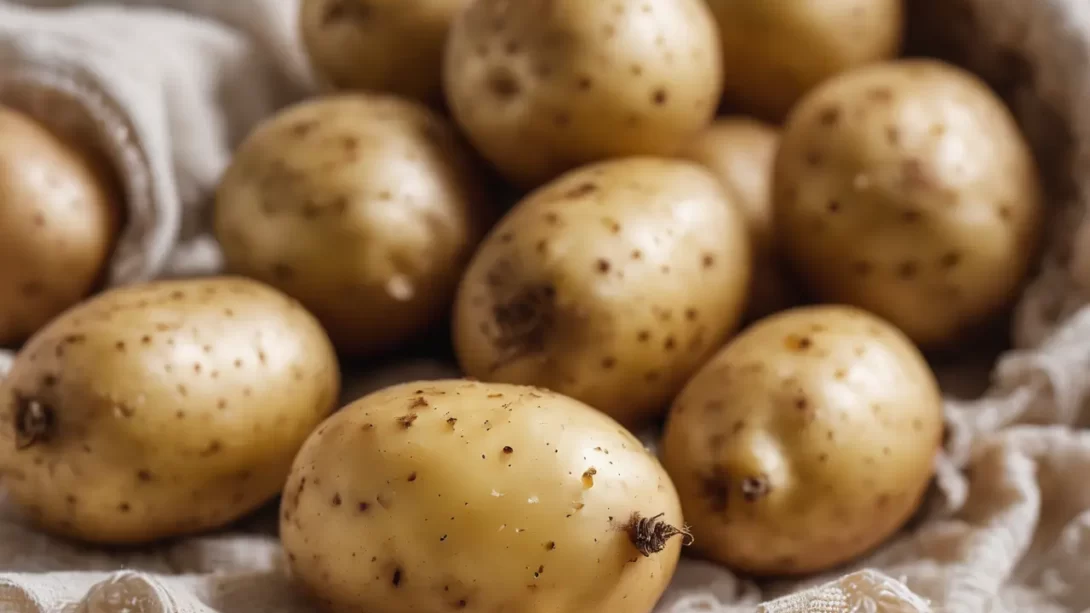Potatoes, one of the most versatile and widely consumed vegetables, are a popular crop for gardeners in Florida. However, due to Florida’s unique climate, planting potatoes at the right time is crucial for a successful harvest. This guide will delve into the specifics of planting potatoes in the Sunshine State, helping you understand the best times and methods to ensure a bountiful yield.
The Florida’s Climate and Potato Varieties
Florida’s climate varies significantly from north to south, influencing the planting and growing of potatoes. The state encompasses USDA hardiness zones 8 through 11, with a range of weather patterns from the cooler North to the subtropical South. Selecting the right potato variety is essential. In Florida, early-maturing varieties like ‘Red Pontiac’ and ‘Yukon Gold’ are preferred due to their ability to thrive in warmer climates and shorter growing seasons.
Optimal Planting Times for Potatoes in Florida
The timing for planting potatoes in Florida varies across different regions. In North Florida, the ideal planting time is January through February. This timing allows the potatoes to grow during cooler weather and avoid the peak of summer heat. Central Florida gardeners should aim to plant from January to March. The slightly warmer climate in this region offers a broader planting window. For South Florida, where winters are mild, planting can occur as early as November and as late as February. These months take advantage of the cooler, but not cold, temperatures favorable for potato growth.
Preparing the Soil for Potato Planting
Successful potato growth in Florida begins with well-prepared soil. Potatoes prefer well-drained, loamy soil with a slightly acidic pH between 5.0 and 6.0. Before planting, conduct a soil test to determine if any adjustments are needed. Enhance the soil by incorporating organic matter like compost or aged manure, which will improve soil fertility and structure. It’s also beneficial to add a balanced fertilizer to provide essential nutrients for your potato plants.
Planting Techniques for Potatoes
When planting potatoes in Florida, you can start with seed potatoes, which are small potato pieces with eyes or buds. Cut the seed potatoes into chunks, ensuring each piece has at least one or two eyes. Before planting, let the cut pieces dry for a day or two to prevent rot. Plant the seed potatoes about 3 inches deep in the soil, with the eyes facing upward. Space them approximately 12 inches apart in rows that are about 2 to 3 feet apart. This spacing allows ample room for the potatoes to grow and for you to hill the soil around the plants as they grow.
Care and Maintenance of Potato Plants
After planting, regular care is essential for healthy potato growth. Water the plants evenly and consistently, keeping the soil moist but not waterlogged. As the potato plants grow, periodically hill soil around the base of the plants. This practice, known as “hilling,” helps to cover the growing tubers and prevent them from being exposed to sunlight, which can cause them to turn green and become toxic. Fertilization is another critical aspect of potato care. Use a low-nitrogen, high-phosphorus fertilizer to encourage good tuber development. Avoid over-fertilizing, as this can lead to lush foliage growth at the expense of the tubers.
Monitoring for pests and diseases is also crucial. Common issues in Florida include aphids, Colorado potato beetles, and fungal diseases like early blight. Implementing integrated pest management strategies, such as crop rotation, using resistant varieties, and applying appropriate organic or chemical treatments, can help manage these challenges. Regular inspections of your potato plants will allow you to identify and address any issues early on.
Harvesting and Storing Potatoes
In Florida, the timing of your potato harvest can vary based on the planting date and the potato variety. Generally, potatoes are ready to harvest when the foliage begins to yellow and die back, approximately 90 to 110 days after planting. For new potatoes, which are smaller and tender, you can start harvesting a few weeks after the plants have finished flowering. To harvest, gently dig around the plant with a spade or fork, being careful not to damage the tubers. After harvesting, allow the potatoes to cure for a day or two in a dry, shaded area to toughen their skins, which helps in storage.
For storing, keep the cured potatoes in a cool, dark, and well-ventilated place. Ideal storage temperatures are between 45°F and 55°F. Avoid storing potatoes in the refrigerator, as cold temperatures can convert their starches into sugars, affecting the flavor. Properly stored potatoes can last several months.
Troubleshooting Common Potato Growing Issues
Growing potatoes in Florida can sometimes present challenges. One common issue is the development of fungal diseases, exacerbated by high humidity and rainfall. Regularly rotate your potato crops and avoid overhead watering to minimize these risks. If pests like aphids or Colorado potato beetles are a problem, consider using insecticidal soaps or neem oil for an organic approach. Also, practice good garden hygiene by removing plant debris and weeds, which can harbor pests.
In case of poor yields, this could be due to a variety of factors including inadequate watering, insufficient fertilization, or planting at the wrong time. Ensure that you are following the recommended practices for soil preparation, watering, and fertilizing. Also, choosing the right potato variety for Florida’s climate is crucial for a successful harvest.
Conclusion
Planting potatoes in Florida can be a rewarding endeavor, yielding a valuable and versatile crop. By understanding the optimal planting times, preparing your soil correctly, and providing consistent care and maintenance, you can successfully grow potatoes in the Sunshine State. Whether you are a seasoned gardener or a beginner, growing potatoes offers an opportunity to enjoy fresh, home-grown produce from your garden. Remember, gardening is a journey of learning and discovery, so enjoy the process and the fruits of your labor. Happy gardening!



